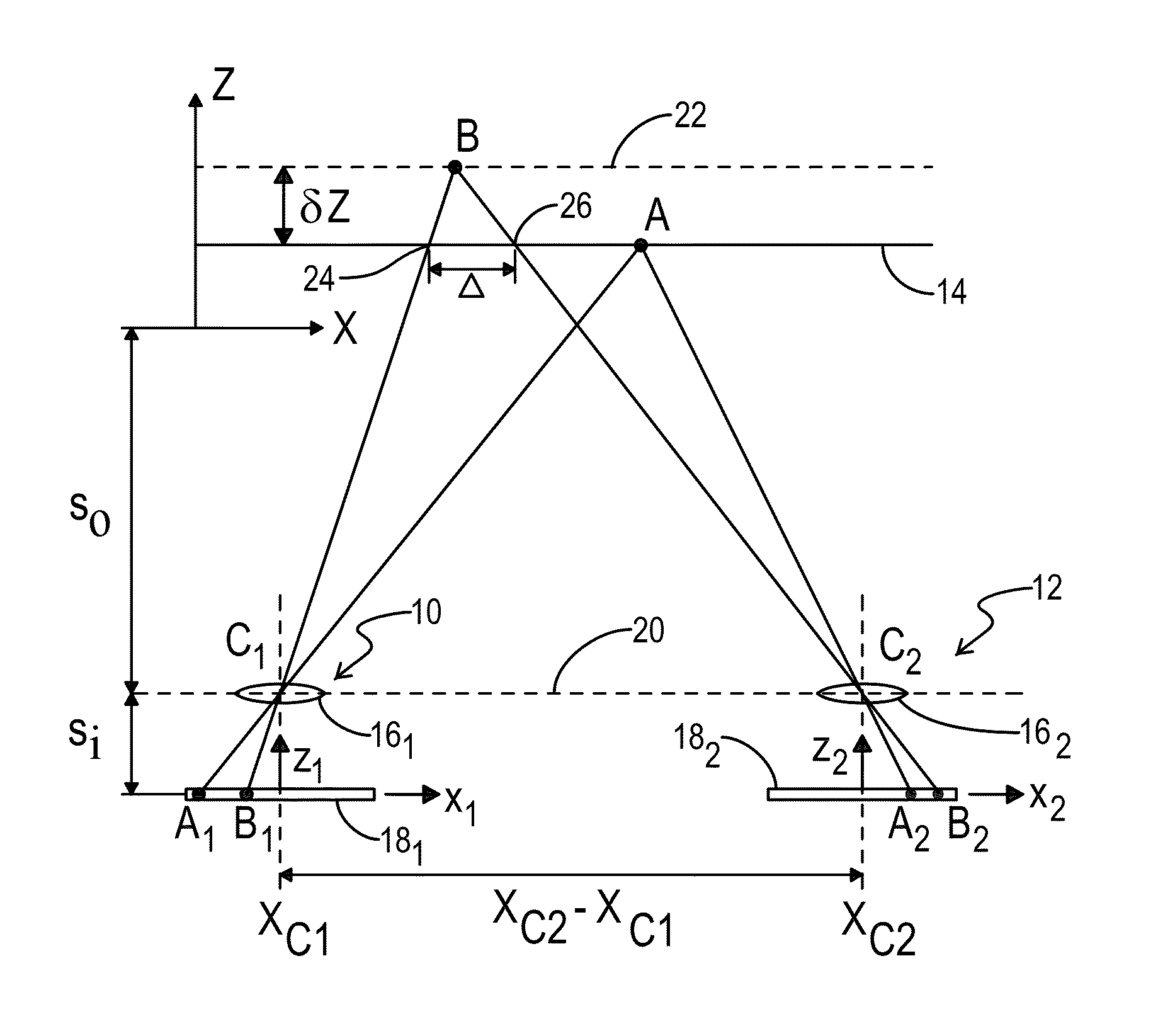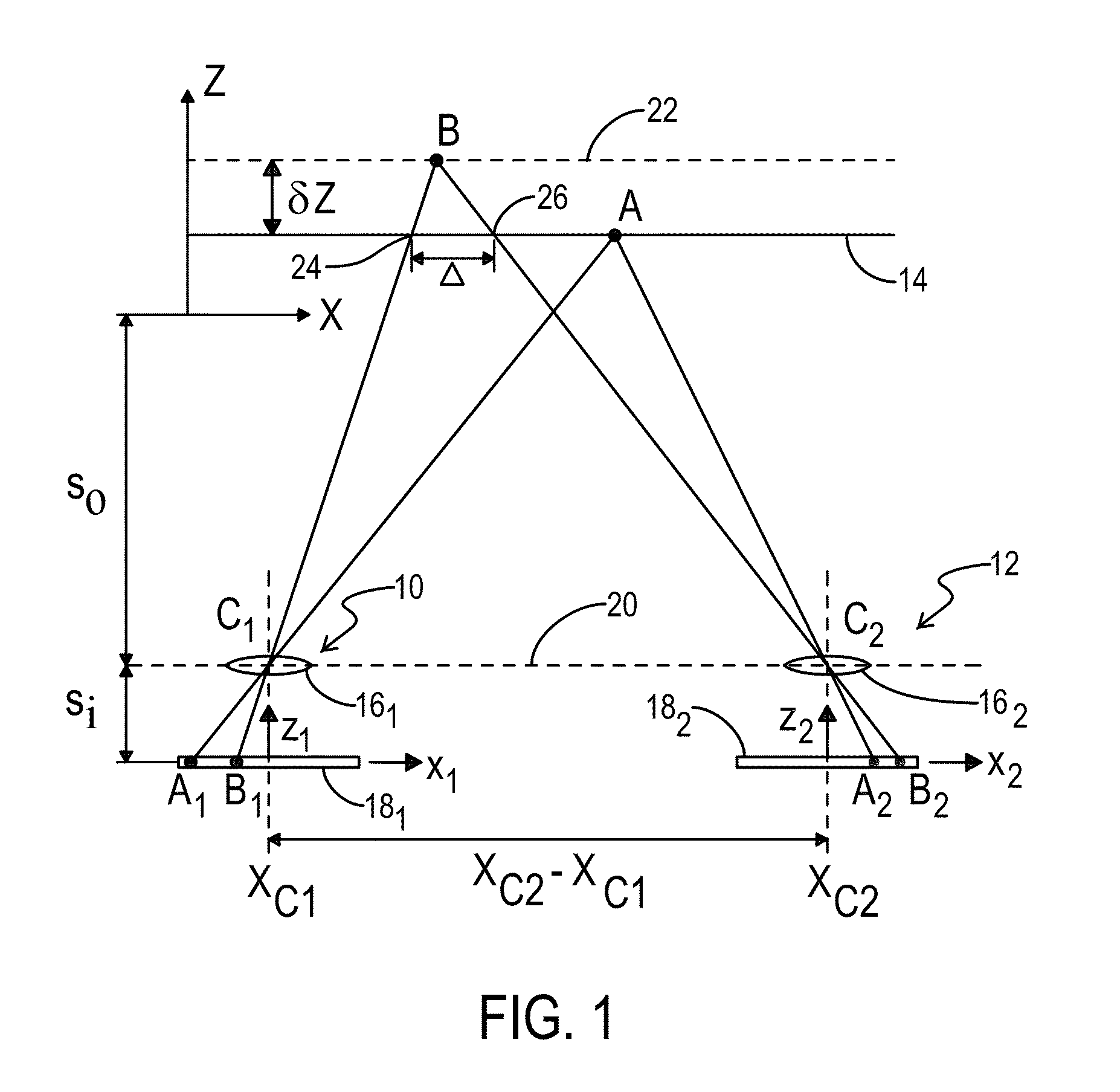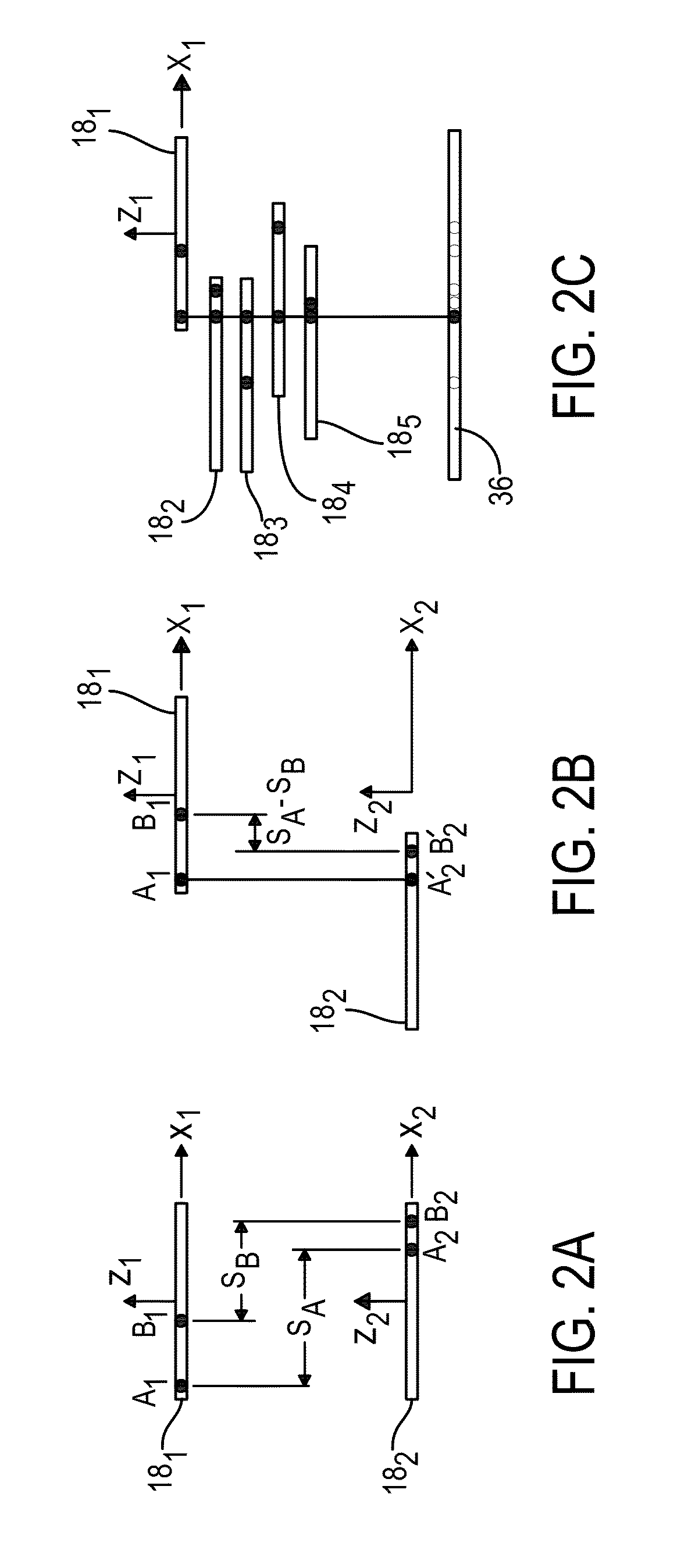Synthetic aperture imaging for fluid flows
- Summary
- Abstract
- Description
- Claims
- Application Information
AI Technical Summary
Benefits of technology
Problems solved by technology
Method used
Image
Examples
Embodiment Construction
[0063]We present a new method for resolving three-dimensional (3D) fluid velocity fields using a technique called synthetic aperture particle image velocimetry (SAPIV). By fusing methods from the imaging community pertaining to light field imaging with concepts that drive experimental fluid mechanics, SAPIV overcomes many of the inherent challenges of three dimensional particle image velocimetry (3D PIV). This method offers the ability to digitally refocus a three dimensional flow field at arbitrary focal planes throughout a volume. The viewable out-of-plane dimension (Z) can be on the same order as the viewable in-plane dimensions (X-Y), and these dimensions can be scaled from tens to hundreds of millimeters. Furthermore, digital refocusing provides the ability to “see-through” partial occlusions, enabling measurements in densely seeded volumes. The advantages are achieved using a camera array (typically at least 5 cameras) to image the seeded fluid volume. The theoretical limits o...
PUM
 Login to View More
Login to View More Abstract
Description
Claims
Application Information
 Login to View More
Login to View More - R&D
- Intellectual Property
- Life Sciences
- Materials
- Tech Scout
- Unparalleled Data Quality
- Higher Quality Content
- 60% Fewer Hallucinations
Browse by: Latest US Patents, China's latest patents, Technical Efficacy Thesaurus, Application Domain, Technology Topic, Popular Technical Reports.
© 2025 PatSnap. All rights reserved.Legal|Privacy policy|Modern Slavery Act Transparency Statement|Sitemap|About US| Contact US: help@patsnap.com



